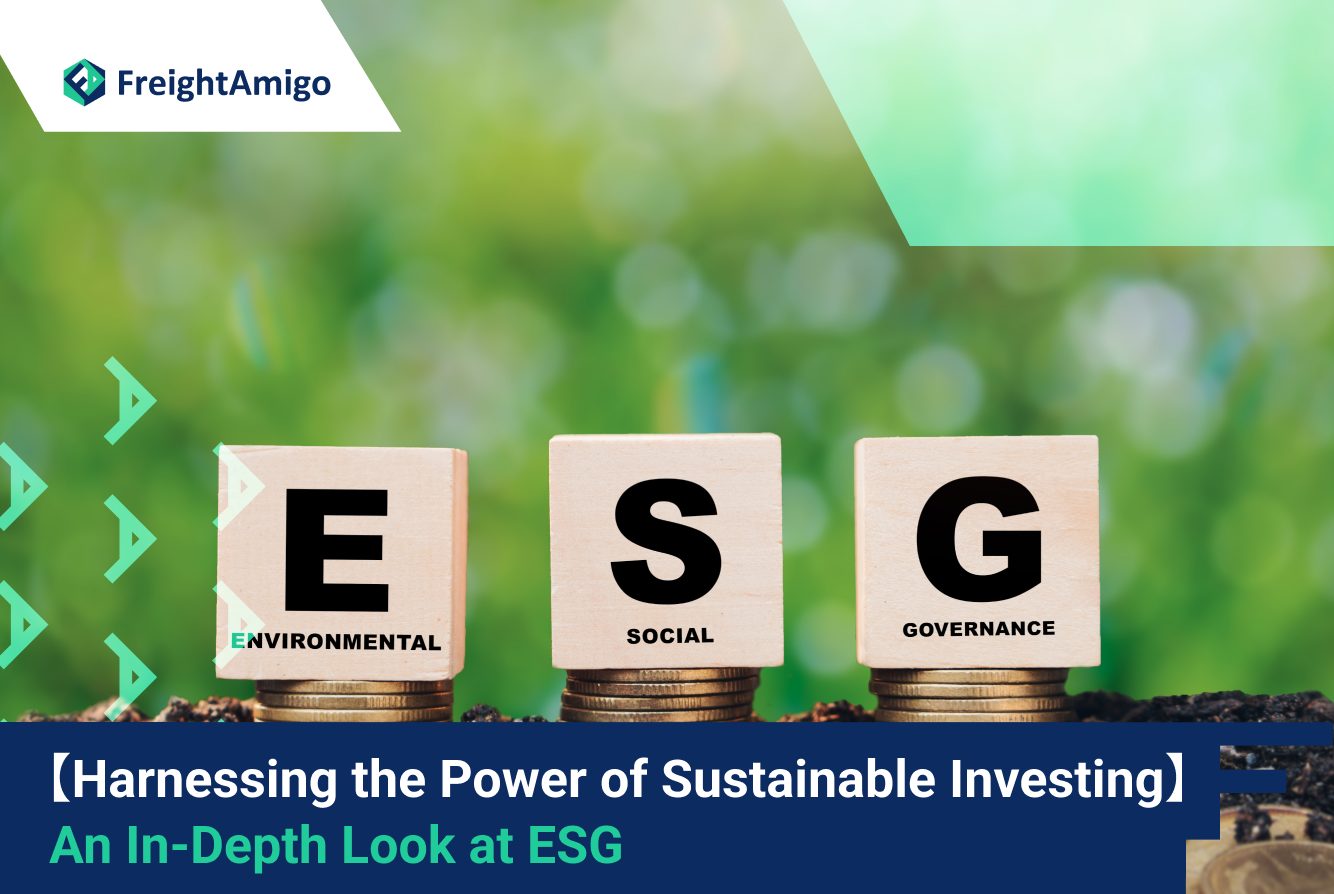Author Name: Tiffany Lee – Marketing Analyst at FreightAmigo
In the evolving world of finance, one term has quickly risen to prominence—sustainable investing. It’s a concept that marries the pursuit of financial return with the desire to generate positive societal impact. For many investors, it’s no longer enough to simply generate a good return; they also want their money to contribute towards a better world.
Sustainable investing represents a shift in the way we think about wealth and value. It acknowledges that financial success doesn’t have to come at the expense of social and environmental wellbeing. Instead, it posits that these elements can—and should—go hand in hand. Sustainable investing is about recognizing the inherent interconnectedness of our global system and using that understanding to drive positive change.
The rise of sustainable investing marks a significant departure from traditional investing practices. But it’s not just a trend or a buzzword—it’s a fundamental shift in the way we approach finance and investment. And it’s a shift that’s here to stay.
Want To Compare The Best Express, Air Freight, Sea Freight, Rail Freight & Trucking Rates So As To Have Better Control On Cost?
The Importance of Sustainable Investing
Sustainable investing isn’t just a nice-to-have—it’s a necessity. As our world faces escalating environmental, social, and governance challenges, the way we invest our money matters more than ever. Our investments can either exacerbate these problems or contribute to their solutions.
Sustainable investing offers a way to align our financial activities with our values and priorities. It allows us to use our money to support companies and initiatives that are working to create a more sustainable, equitable world. But it’s not just about doing good—it’s also about doing well. Research has shown that sustainable investments can perform just as well, if not better, than traditional investments.
In fact, sustainable investing is becoming increasingly important for financial stability. As we face the realities of climate change and social inequality, the risks associated with unsustainable business practices are becoming more apparent. Investors who fail to consider these risks could find themselves facing significant financial losses.
Understanding ESG: Environmental, Social, and Governance Factors
At the heart of sustainable investing are Environmental, Social, and Governance (ESG) factors. These factors provide a framework for assessing the sustainability and ethical impacts of an investment.
Environmental factors consider how a company manages its impact on the environment. This could include its approach to climate change, waste management, and natural resource conservation. Social factors look at a company’s relationships with its employees, suppliers, customers, and the communities in which it operates. Governance factors assess a company’s leadership, executive pay, audits, internal controls, and shareholder rights.
ESG factors provide a way to quantify the sustainability and societal impact of an investment. They allow investors to make more informed decisions and to align their investments with their values. But they’re not just about risk mitigation—they can also help identify opportunities for value creation.
Why ESG Matters in Sustainable Investing
ESG isn’t just a nice-to-have in sustainable investing—it’s a must-have. ESG factors provide critical insights into a company’s long-term prospects. Companies with strong ESG performance are likely to be more resilient, more innovative, and better equipped to navigate future challenges.
Investors who consider ESG factors in their decision-making process can better understand the risks and opportunities associated with an investment. They can identify companies that are well-positioned to thrive in a sustainable economy and avoid those that are likely to struggle.
Furthermore, ESG factors can help investors identify companies that are not only generating financial returns but also making a positive impact on society. By considering ESG factors, investors can align their financial goals with their personal values and contribute towards a more sustainable, equitable world.
Strategies for Sustainable Investing
There are several strategies that investors can use to incorporate sustainability into their portfolios. One approach is to screen out companies that are involved in unethical or unsustainable practices. This is often referred to as negative screening or exclusionary screening.
Another strategy is to actively seek out companies that are making a positive impact. This is known as positive screening or inclusionary screening. Investors could also consider impact investing, which involves investing in companies with the explicit goal of generating a positive social or environmental impact alongside a financial return.
Finally, investors could engage with companies to encourage them to improve their sustainability performance. This could involve voting at shareholder meetings, engaging in dialogue with company management, or filing shareholder resolutions.
Future Trends in Sustainable and Environmental Investing
As we look to the future, it’s clear that sustainable and environmental investing will play an increasingly important role in the financial landscape. There is growing recognition that our financial system needs to align with our societal and environmental goals.
One trend to watch is the increasing integration of ESG factors into investment decision-making processes. As investors become more aware of the risks and opportunities associated with ESG issues, these factors will become an integral part of the investment process.
Another trend is the growing demand for transparency and accountability. Investors are increasingly demanding that companies disclose their ESG performance and that they are held accountable for their impacts.
Finally, we can expect to see an increase in regulation and policy support for sustainable investing. As the urgency of our environmental and social challenges becomes more apparent, governments and regulators are likely to take action to encourage sustainable investing.
Conclusion: The Power of Sustainable Investing
In conclusion, sustainable investing represents a powerful tool for change. It allows us to align our financial activities with our values and priorities. It enables us to support companies that are working towards a more sustainable, equitable world. And it provides a way to generate financial returns while also making a positive impact.
The rise of sustainable investing marks a significant shift in the world of finance. It’s a shift that’s driven by a growing recognition of our interconnectedness and the need for a more sustainable, equitable economic system. And it’s a shift that’s here to stay.
As we look to the future, it’s clear that sustainable investing will play an increasingly important role in our financial system. It’s not just a trend—it’s a fundamental change in the way we think about investment. And it’s a change that offers significant opportunities for investors and society as a whole. So let’s harness the power of sustainable investing and use it to create a better world.
There Are Different Options For Cargo Transportation. If You Want To Choose The Most Convenient And Suitable Solution, It Is Best To Have The Full Support Of Logistics Experts! If You Are Planning To Ship Goods Overseas, Please Go To The FreightAmigo Page For Inquiries.
===
Read More:
【Logistics News】Singapore to Sign Declaration on Green Shipping Corridors
FreightAmigo Won Startup Grand Award In TechChallenge — Digitising Trade Finance
Sailing Schedule: Streamlining Logistics Operations for Efficient Shipments
===
If you have any inquiries on logistics/supply chain, feel free to contact FreightAmigo now:
Chat with us online OR
Phone : +852 28121686
WhatsApp: +852 27467829









































